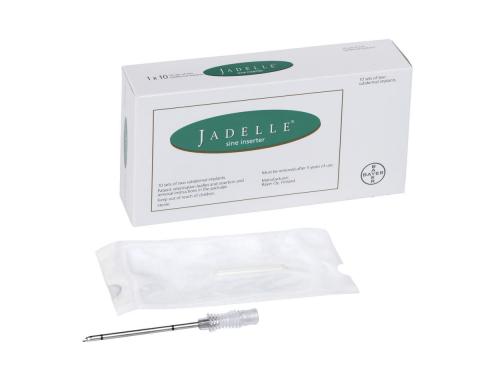About Contraceptive Implants
Globally, 86 million pregnancies were unintended; of these, 41 million ended in abortions, 33 million in unplanned birth, and 11 million in miscarriage.
Sexually-active women of reproductive age in developing countries experience high rates of unintended pregnancy. Globally, 86 million pregnancies were unintended; of these, 41 million ended in abortions, 33 million in unplanned birth, and 11 million in miscarriage. When women and couples can access a wide range of contraceptive methods, they are more likely to find a method they like and can use over a period of time, to switch methods when life circumstances change, and to meet their contraceptive intentions.
Commodity Context
Hormonal implants consist of small, thin, flexible plastic rods, each about the size of a matchstick, that release a progestin hormone into the body. They are safe, highly effective, and quickly reversible long-acting progestin-only contraceptives that require little attention after insertion. Clients are satisfied with them because they are convenient to use, long-lasting, and highly effective. Implants, which are inserted under the skin of a woman’s upper arm, prevent pregnancy for three to five years after administration. No regular action by the user and no routine clinical follow-up are required.
Product Efficacy
Implants are one of the most effective contraceptive methods. Efficacy rates are comparable to those of other long-acting reversible contraceptives and permanent methods, including the IUD and female and male sterilization. The contraceptive effect of implants ends immediately after removal and fertility returns rapidly. In general, long-acting methods, including implants, are more effective in practice than shorter acting methods, including oral contraceptives and injectables, because compliance and continuation rates are higher with methods that do not require regular action by the user[1].
Products Available
Implants are available from three main manufacturers:
- Bayer Pharma AG (Germany),
- Merck/MSD Inc (USA), and
- Shanghai Dahua Pharmaceuticals Co., Ltd (China)
Cost ranges from $8.00 to $18.00 per unit. The most common brands of implants include:
Jadelle (WHO prequalified): two rods each containing 75 mg of levonorgestrel, effective for five years, with recent price-reduction agreement with donor volume guarantees;
Sino-implant (II) (not yet pre-qualified by WHO and is currently marketed under various trade names including Zarin, Femplant and Trust): two rods each containing 75 mg of levonorgestrel, effective for at least four years;
Implanon (WHO prequalified) and Nexplanon: both with one rod containing 68 mg of etonogestrel, effective for three years. Nexplanon is radio-opaque, allowing x-ray detection if the rod is difficult to locate due to deep insertion, and also has an improved trocar. Recent price-reduction agreement reached with donor volume guarantees.
Common Barriers
Limited availability and high upfront commodity costs are a significant barrier to contraceptive implants use, though recent price reduction agreements are designed to increase access and availability. Fear of side effects is also a common barrier across different country contexts. Although fear is associated with some known side effects, such as menstrual disturbance, weight gain, breast pain, etc., many women and providers have misconceptions about side effects – for example believing that implants can interrupt pregnancy or cause infertility or cancer. Low levels of knowledge, among both clients and providers, are also associated with limited uptake. Knowledge is lacking on insertion and removal methods, implant-specific side effects, and policy-related issues, such as who is allowed to provide long-acting methods. Provider bias is also a common barrier, such as reluctance to offer long-acting methods to young women or women who have not yet given birth, although WHO guidelines include no such restrictions.
However, when women are knowledgeable about implants, the long duration of implants effectiveness is the most common perceived advantage. Additional benefits identified include the ability to use when breastfeeding, comfort, and ease of insertion and removal.
For more information on contraceptive implants, please check the UN Every Woman Every Child webpage.
[1] United Nations Commission on Life-Saving Commodities for Women and Children. (2012). Contraceptive Commodities for Women's Health.



 This website is made possible by the support of the American People through the
This website is made possible by the support of the American People through the